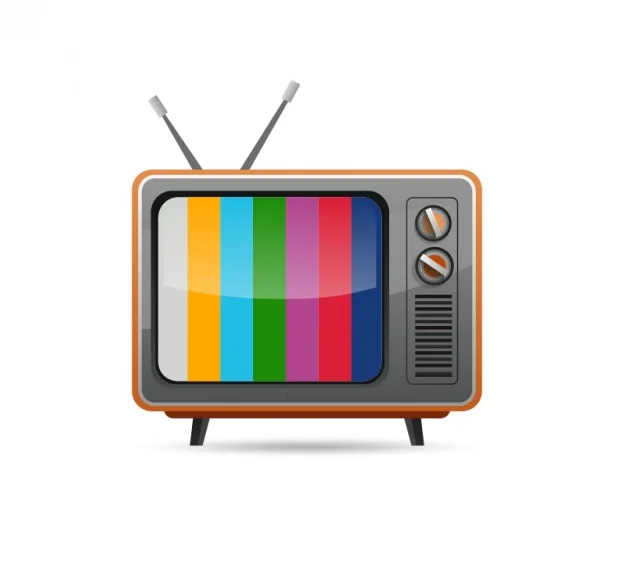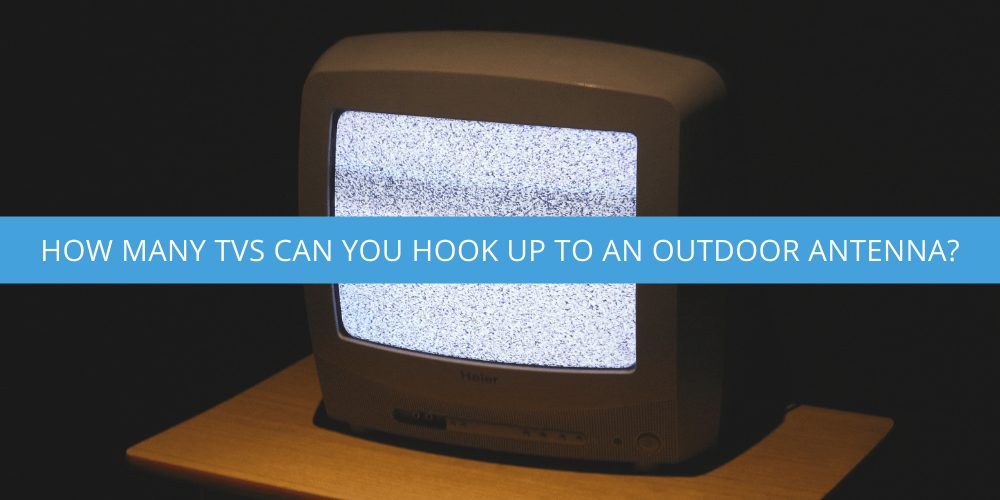You can hook up as many TVs to a single outdoor antenna as you want, but you might need to consider a few factors, including your location, the splitter you bought, and your region’s attenuation rate.
On average, three to four TVs can be connected to an antenna.

The dependencies to answer this question we will cover below include:
- Type of antenna: A basic outdoor antenna may support up to 2 TVs, while a high-gain or multi-directional antenna may support up to 4 TVs.
- Distance from the antenna: The further the TVs are from the antenna, the weaker the signal will be. Generally, you can expect to lose about 1-2 TVs of capacity for every 100 feet of distance between the antenna and the TVs.
- Type of coaxial cable: The type of coaxial cable being used can also affect the number of TVs that can be connected. For example, a higher-quality coaxial cable with a lower loss rating may allow you to connect more TVs than a lower-quality cable.
- Signal strength: The strength of the antenna’s signal will also play a role in how many TVs can be connected. An antenna with a strong signal may support more TVs than an antenna with a weaker signal.
Hooking up Multiple TVs to an Outdoor Antenna
Splitters are devices that are used to connect several televisions to one antenna. It essentially splits the signals of coaxial cables.
But it might affect the picture and sound quality and cause signal loss. This can happen when too many TVs are hooked to one antenna. To that end, various factors influence the number of TVs you can connect to an antenna. (1)
1. Location of Your House
The location of your house and the approximate distance of it from the signal transmitter plays an immense role in how well or efficiently your antenna receives the signals. If you’re close to the epicenter, you’re much more likely to get a good signal and have better chances of hooking up more TVs to the antenna.
It would be best to consider the hindrances between the transmitter and the receiver, such as buildings, trees, etc. While buying the splitter, check the frequency of the device. This will inform you what range of frequencies the splitter will allow to pass through.
Depending on that, you can compute how many TVs you can connect to without compromising signal quality.

2. Signal Loss
Signal loss, or attenuation, refers to the loss of signal strength across a medium. This can make the signals a little distorted, which would reflect in the poor reception of your TV. Typically, these are caused by no signals from the transmitter, incorrect configuration, a failure in the cable, or as in our context, due to the splitter.
The general rule of thumb dictates that the more outputs, the greater the signal loss. A two-way splitter will have a marginal signal loss, as opposed to a four-way splitter or an eight-way one. But then again, it also depends upon the kind of splitter you have gone for and the range of its frequency and bandwidth.
The more the frequency, the more TVs you can connect with one splitter while keeping the signal loss in check or at least low.
Although, the problem of signal loss can be fixed by installing a distribution amplifier or antenna preamplifier if you must hook several TVs to one outdoor antenna.
In general, you can expect the signal strength to degrade by about 1-2 TVs of capacity for every 100 feet of distance between the splitter and the TVs. However, this is just a rough estimate, and your actual results may vary based on your specific setup and location. If you are unsure of the signal strength of your TV antenna splitter, it is recommended to consult a qualified technician or refer to the manufacturer’s guidelines.
3. Splitter Model
The brand and model of the splitter you have gone for are also crucial.
Specifications like frequency range, attenuation, and the number of coaxial ports play a key role in determining how many TVs you can hook up to an outdoor antenna.
- Basic splitter: A basic splitter typically has two output ports and can split the signal from a single antenna to two TVs. These splitters are usually able to support up to 2 TVs.
- High-gain splitter: A high-gain splitter is designed to amplify the signal from an antenna, which can help to improve the signal strength and allow more TVs to be connected. These splitters may be able to support up to 4 TVs.
If the range of a splitter is wide, the attenuation less, and the number of ports more, you can easily connect four TVs, provided that it is a 4-way one.
However, if the frequency is narrow, the most you can connect is two TVs without compromising on the signals and the quality.
Conclusion
The number of TVs you can hook up to an outdoor TV antenna depends upon the three prime factors discussed above.
But under the ideal circumstances, you can easily pull off four TVs, with optimum signal quality, provided that the splitter you bought is a four-way one. You can also work something up with a distribution amplifier if need be.
References(1) coaxial cables – https://www.britannica.com/technology/coaxial-cable

